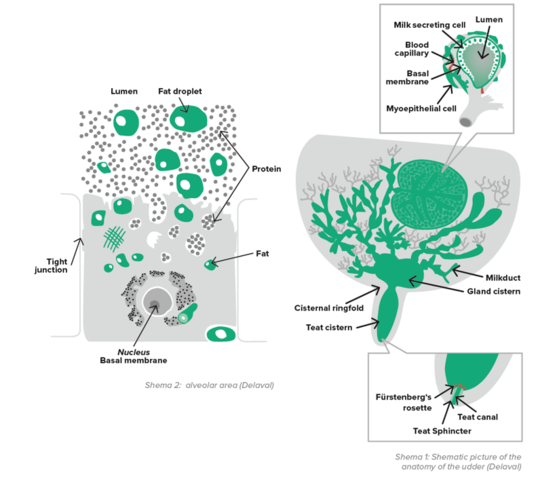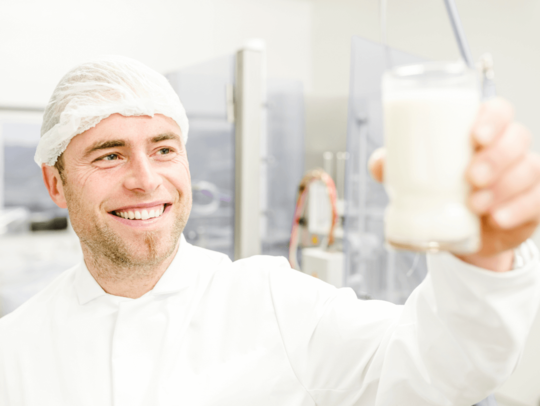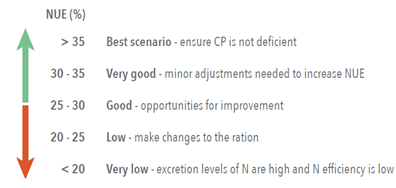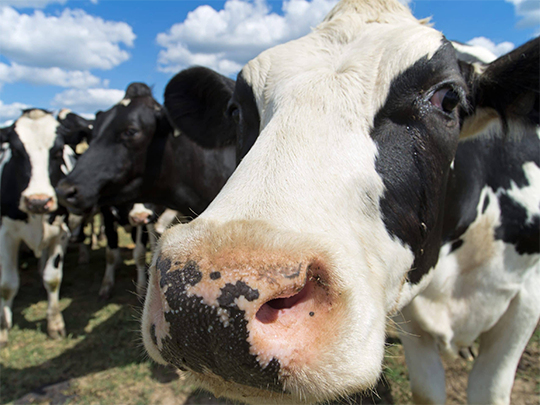Phytogenic feed additives in dairy cattle - Support for best protein efficiency (part 1)
In dairy milk production attention is mostly concentrated on efficiency. One the one hand there is talk of efficiency of animal production and on the other hand, we are talking about feed efficiency. Farmers of today invest a lot in high quality genetics – the much more it is important to maintain very high-quality rations as well, hence making it possible to fully exploit the genetic potential of the dairy cows. Phytogenic (plant-based) feed additives (PFA) have been able to substantially up-value ruminant rations for years – and their future is promising.
Milk and protein synthesis in the udder

Dairy cows are true top athletes. To produce one kg of milk, about 500 liters of blood flow through the udder, which means that for today's high-performance cows about 20,000 liters of blood are required. Of course, these processes represent a great physiological strain for lactating cows - accompanied by special feeding requirements that must be met best possible.
The udder is a very big organ weighing around 50 kg, including milk and blood. The mammary gland comprises secreting tissue and connective tissue, the former representing the main limiting factor for the milk production. The secretory cells (alveoli) synthesize the milk which is stored in the lumen of each alveoli. Clusters of alveoli that drain to a common duct form a lobule, from which the milk is squeezed into the milk duct, hence to the gland cistern. Once the cistern is filled, the milk remains in the lobule.

The milk protein (largely casein, and to a smaller extent whey protein) is synthesized from blood derived amino acids and peptides. The main part of casein occurs in the form of so-called casein micelles (small spherical aggregates, each containing thousands of casein molecules), whose aggregation takes place in the Golgi vesicles of the secretory cells in presence of calcium and phosphorus. In addition to being processed, casein plays an important role from a nutritional point of view due to its favorable amino acid pattern.
The milk protein content is influenced by endogenous and exogenous factors such as genetic potential, lactation stage, feeding and husbandry. But before the milk protein is synthesized, it is the cow that must be supplied with sufficient protein first.
The protein supply in dairy cows is ensured by a sufficient content of crude protein in the ration
Crude protein is broken down to ammonia in the rumen with the help of microbes, which then convert the ammonia into precious microbial protein, given that the microbes are provided with energy from fermentable carbohydrates. If there is a crude protein surplus and/or energy deficiency, an ammonia surplus is produced which must be detoxified via the liver in the form of urea, being measurable in the blood, urine and milk. The decisive factor is the amount of protein that reaches the small intestine, where it is available to the animal. This amount mainly consists of microbial protein (50-75%) and to a lesser extent of undegradable protein, which passes the rumen and reaches the small intestine directly.
This explains...
...the necessity to feed high-performance dairy cows need-based and in the most optimal way possible. Beside adequate crude fiber and feed structure supply, energy and further nutrients, sufficient nitrogen is the most important prerequisite for a high protein synthesis in ruminants. A balanced N supply reduces the risk of energy shortfalls and positively affects the cow’s fertility, whereas an oversupply of N burdens the liver as the main metabolic organ and should therefore, be avoided best possible. Besides, inefficient N use inevitably burdens the animal, the environment and of course also the economic efficiency.
The containment of ammonia emissions to the environment is a consistent challenge facing agriculture. Besides many other aspects, feeding, especially the protein supply, plays a crucial role here. The protein efficiency describes the ability of a dairy cow to metabolize protein and non-protein N into milk protein.
A protein surplus or deficiency situation in the rumen is expressed by the ruminal nitrogen balance (RNB). It is a benchmark for a sufficient supply of nitrogen to the rumen microorganisms of dairy and rearing cattle. In order to fully exploit the microbial activity in the rumen and the performance potential of the animals, a zero balance (RNB=0) in the total ration is aimed for. Therefore, it is important to prevent a more than 10% nitrogen over- or undersupply.
Nitrogen use efficiency (NUE)

Animal nitrogen use efficiency [NUE = Milk nitrogen (kg/day) / Nitrogen in the diet] is defined as the percentage of total feed N intake incorporated into milk and meat. The NUE value is seen as useful indicator in order to optimize feed use whilst minimizing N losses, and ranges from below 20 % to a theoretical maximum of 45 % and is usually around 30 %. However, though the NUE is commonly used to evaluate the relative transformation of N inputs into animal derived products (e.g. milk) and to point out the risk of N losses into the environment, it is always situation and impact dependent. This means that it is not advisable to think that a high NUE does necessarily indicate low risks of N loss.

Especially in highly intensive systems, the NUE can be high but at the same time the risk of N losses can still be significant. However, high utilization of N input whilst keeping the risk of N losses at a minimum and at the same time not affecting productivity, should be targeted. Consequently, for dairy farmers the challenge is to minimize the crude protein level in the diet, thus reducing feed costs and N losses in the environment, but without sacrificing the milk production. Certain feed additives, including phytogenics, can help to reach this target, as they are able to support animals’ performance through enhancing nutrient efficiency and unfold their efficacy, where it is most effective: in the intestine of the livestock.
References upon request
This article originally appeared in International Dairy Topics, Volume 19, Number 2.

Thierry Aubert
Thierry Aubert can look back on 15 years of experience in the premix, feed and meat industry. Since the beginning of his career, Thierry is in regular exchange with the farmers to understand their challenges and needs. In 2013 he joined Delacon as Species Leader Ruminants. With his team, he is in charge of the global product development for the ruminant species and customer technical support. Since spring 2018, his task areas have been extended: At the moment, he is also responsible for the coordination of the Reginal Technical Managers worldwide. In his leisure time, he likes to go running and already participated in several marathons.










